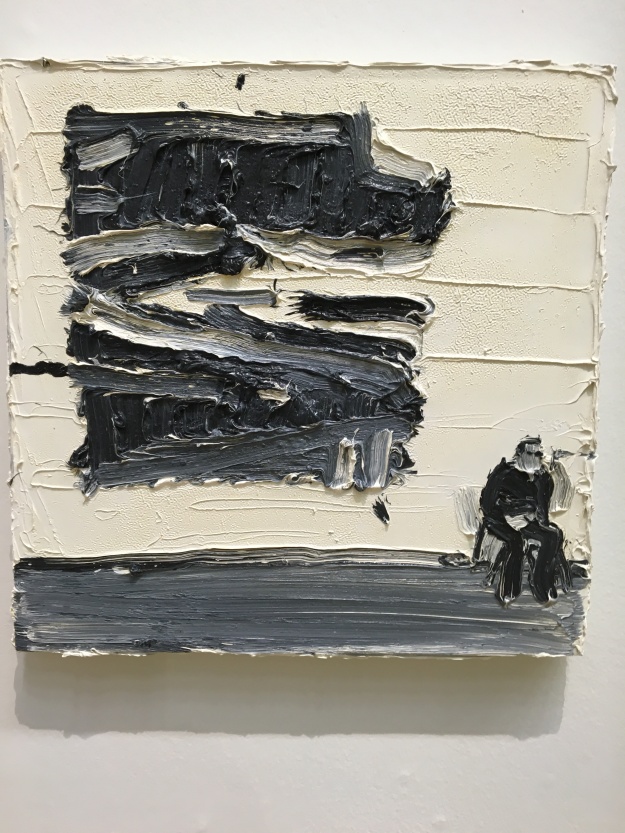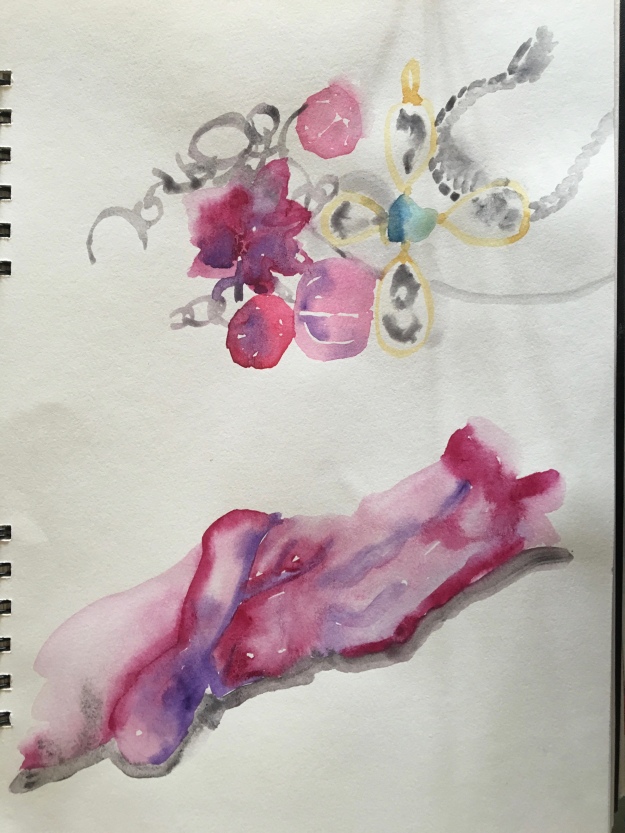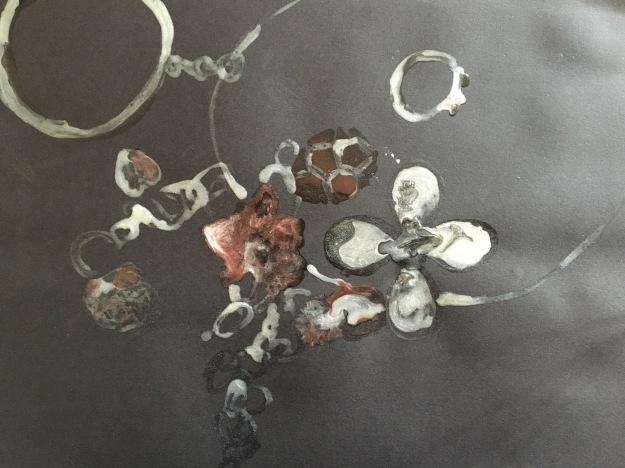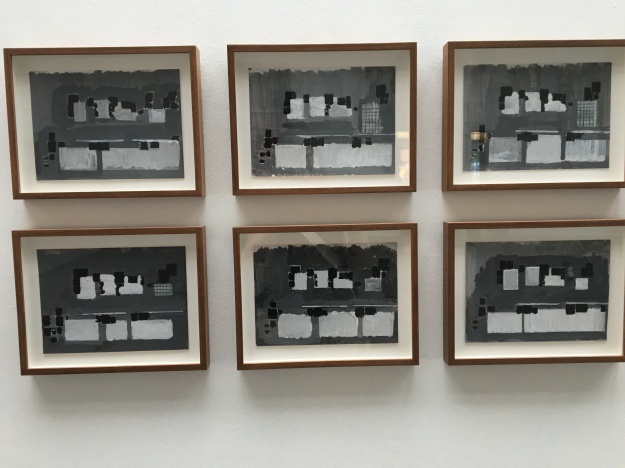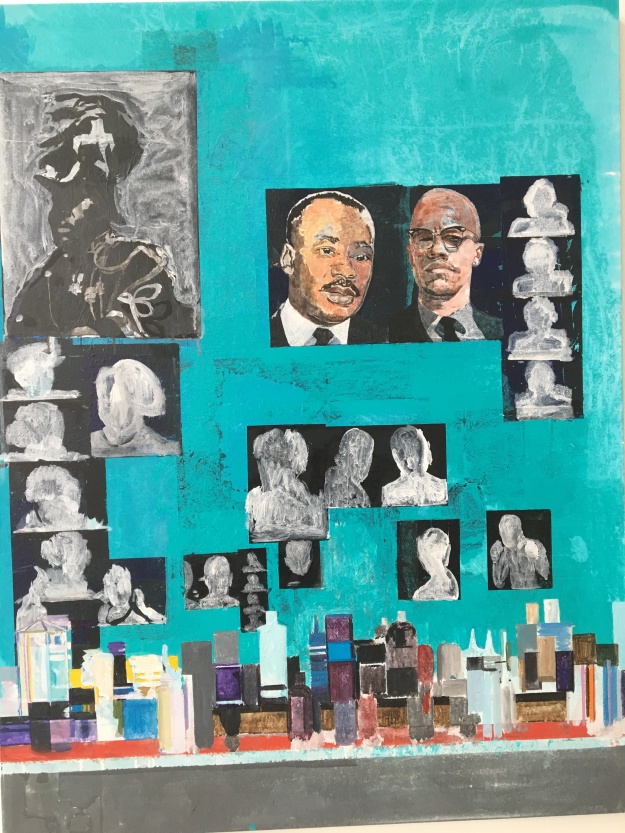Liverpool has a fantastic collection of galleries and it was interesting to visit a diverse range, starting with the old Walker Gallery.
I was disappointed to find the room with Peter Doig’s ‘Blotter’ shut for refurbishment. I had seen a similar mid 90’s period work at the London Tate Modern and had been keen to compare but it was not to be.

Lucien Freud – Interior at Paddington 1951
The figure here looks a bit unkempt and seedy, with flying hair and a rather odd clenched fist. I have read it is supposed to emulate the stance of Henry VIII paintings. The perspective of the figure is odd, he looks short with short legs and he fights for compositional priority with the potted plant that looks like its winining! Its a paint style I admire, but am not really drawn to – its flat and I find this makes Freud’s faces look sort of inhuman and lifeless. In contrast the plant looks realistic!

L S Lowry – The Fever Van 1935
I particularly like this Lowry painting. The composition using the ambulance as a distant view is interesting. It makes me feel like I’m part of a wider community ogling it from afar. Having a fever van come must have been a worrying thing, I can’t imagine the survival rate from a trip in onw of these was that high in these times. This local community would have known the patient. The forground houses are red, and the background more blue – grey. The smoke stack belches its smoke over the whole sky, casting shadows on the houses and there is no illusion this is anything but an industrial urban scene. As always, there are dynamic figures about, wadering dogs and plenty going on.
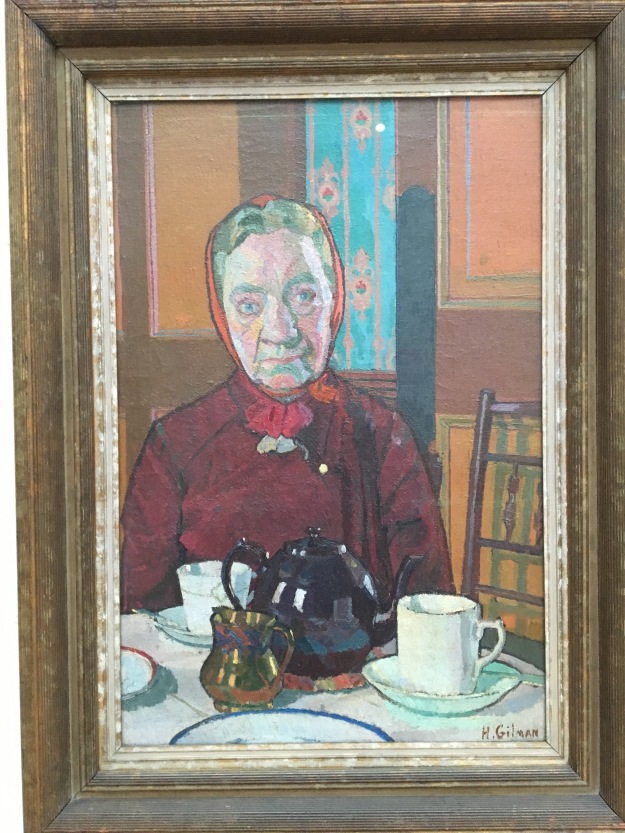
Harold Gilman – Mrs Mounter 1916
I love this non glamourised figure, seated in front of tea, but still wearing all her outdoor clothing! The blue in the wallpaper is echoed in her face, and reminds me of Marlene Dumas portraits. Her stare is direct and a bit challenging. One eye is higher than the other. It looks like the artist knows this lady well! I’ve bought a book on this artist as I liked this so much. I have read that sadly he died young.
Tate Liverpool
It’s been 25 years since I last went in here, disappointed at the displays of piles of bricks. I know my thinking has changed dramatically about contemporary art, but I’m still not sure I want to look at bricks for long.
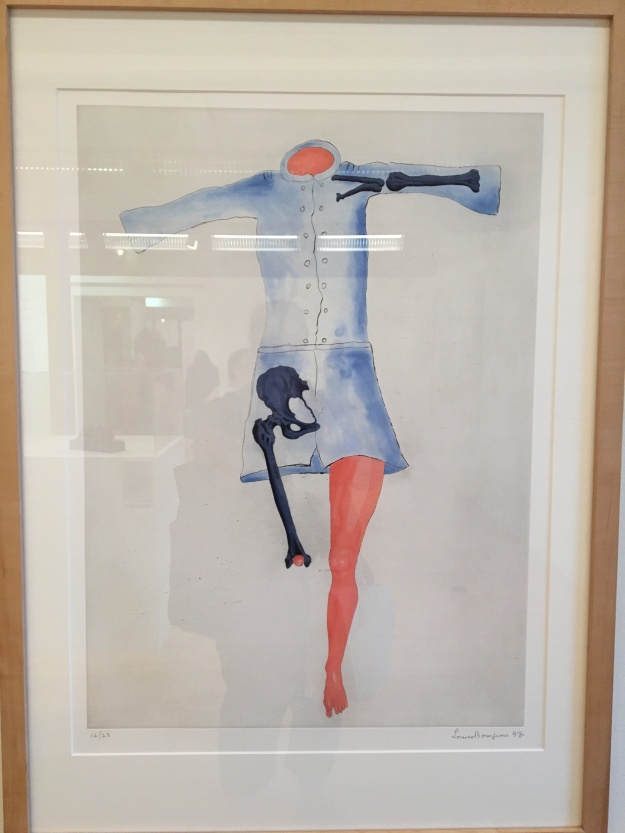
Louise Bourgeois – Blue Dress 1998
I’ve been intrigued with this artist after seeing her show at the Tate Modern a few weeks ago. Also, an old interview where she jsut decided the interview was over and left the room! I liked the idea behind this painting – the bones are well drawn and unexpected additions to the dress! A lot are missing too. Its odd, and interesting.

Marie-Louise von Motesiczy – From night into day 1975
Here is the artist’s mother, who was losing concept of night and day when this was painted. I like the painterly style and attention to objects. The facial expression looks appealing, as if this is a happy lady, despte being confined to her bed. The dog looks concerned.
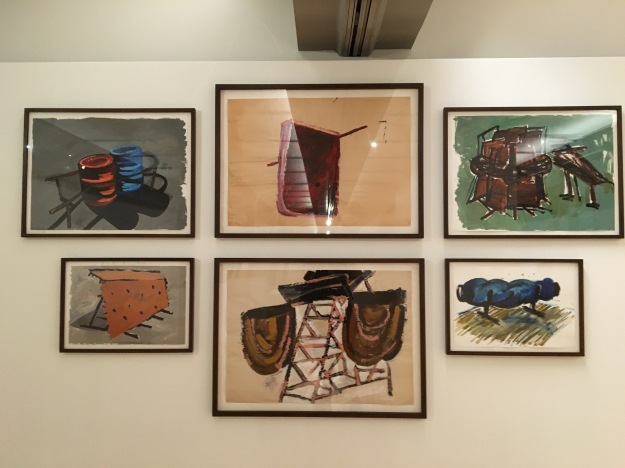
Phylida Barlow 1997-2004
These are drawings made prior to sculpture. I liked the simple subjects, made interesting by using so many different paint marks!

Phylida Barlow – close up
This close up shows the different marks – a lot of dry brush strokes and I admire the good drawing. I’ve struggled with making ‘everyday’ objects look interesting and will take some inspiration from this.
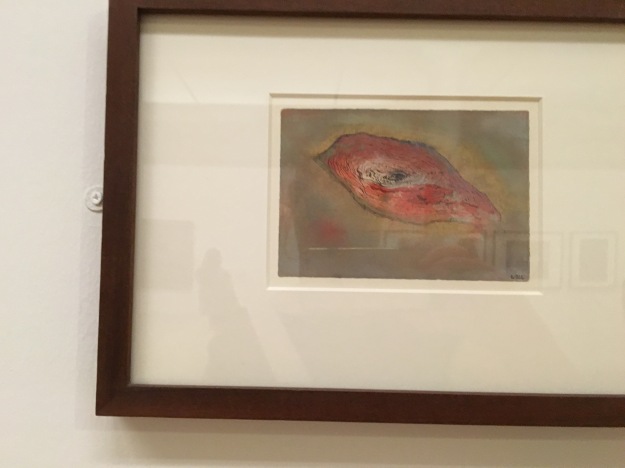
Wols – untitled 1944
I was drawn into this one because I was wondering what on earth it was. It could be a cut of meat, an eye, female genitals, a tree cross section. Staring at it for a while, I still wasn’t sure. It has made me think how I could do that with an object, make it so ambiguous? I will try to think of something.
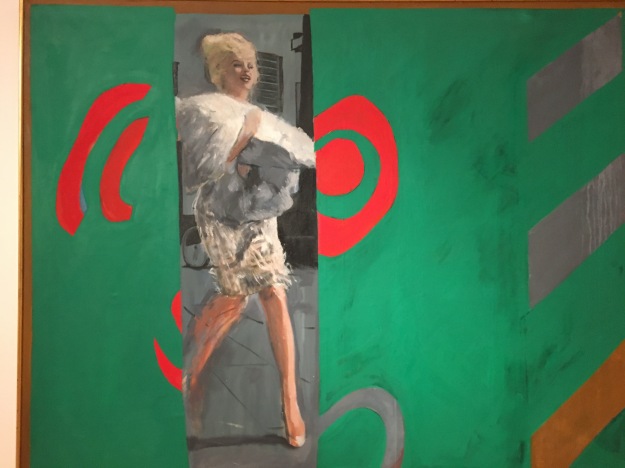
Pauline Baty – The only blonde in the world – 1963
I like this loose style, the paint looks quite feathery and gives movement to the paitning. The title makes it clear who the subject was. What I liked here was the composition, like it’s being viewed through an opening curtain as if spying on her. Again, an idea for the future.
Bluecoat gallery
I was fortunate to catch the Bloomberg new contemporary show here. To be honest, a lot left me cold. There was not much information with the works and only a display copy of the catalogue, so it was hard to read to guess some of the intent.
Above is Michael Coxs’ work ‘De Beauvoir’ and ‘Aylesbury’ 2015.
I’m guessing these are condemned builidings. I like how nature is starting to reclaim it in the second one. In the last few weeks I’ve seen quite similar old council blocks in many exhibitions – in the RA summer exhibition, the Ruskin drawing prize and Mandy Payne’s at the John Moores painting prize. I was starting to feel a bit weary of this subject. The first in particular did not hold my attention like others of the genre, there seems less to look at than Jock Mcfadyan’s below at the Summer RA show – which had a more interesting perspective in my opinion.

Jock Mcfadyan -Pink Flats 2

Jack Bodimeade Plug 2016
I was suprised to find myself liking these plug sockets. Who would have thought these could look interesting? It reminded me of Alex Hanna’s radiators!
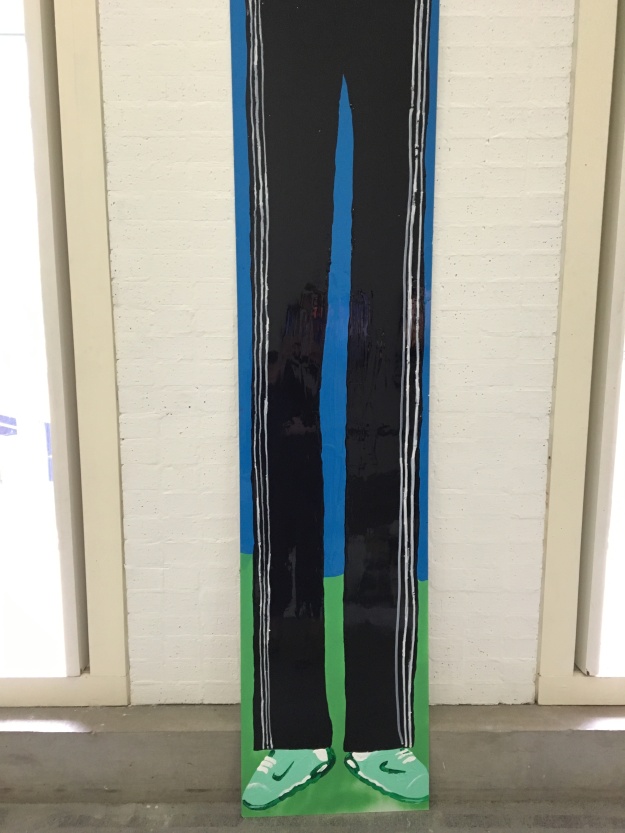
Alfie Kungu – Big Al 2016
This appealed to me because it was spray paint on aluminium and I’ve been developing my skills with that lately. This is large, the legs are the size of a whole human. Theres no persepctive about it – the shows are naive in style, but it appealed to me.
I read some of the comments in the visitors book, many were extremely negative about it. A lot of ‘rubbish’ ‘disgraceful’. At least it gets a reaction!




















